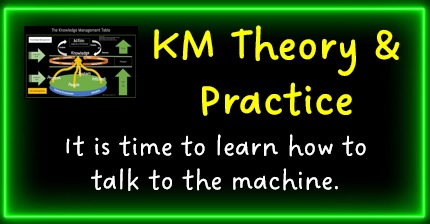Interoperability – Human, it is time to learn how to talk to the machine. *
|
What is Interoperability? It is the ability
of two or more information systems, when not on the same Information
technology platform or stack, to communicate between each other, therefore
have the same way of interpreting data or information even though each
systems “speaks” its own “language”. Call it transform to translate to
meaning. |
A while back I did a course from Tish Chungoora a knowledge graph consultant, course name Ontologies for Business Analysis(Udemy),
An introduction to knowledge-based methods for transforming your business into
the intelligent enterprise.
In summary, this course shows you how to use business analysis
accompanied with techniques (Practical examples) to transform the information into
ontologies(semantics) for knowledge modeling to enable interoperability using knowledge
graphs.
|
Knowledge Modeling: We are looking at Taxonomy and Ontology here. For a detailed explanation, have a look at this link from “Enterprise Knowledge”. I suppose the easiest way to explain this is (as metaphor) that taxonomy could be described as a trees’ root system, branching out, top to bottom, whereas when introducing ontology, different root systems will be “linked” together, even if they are a different species, to be able to communicate sensibly (Interoperability).
|
Other courses from Tish Chungoora:
- Practical Knowledge Modelling: Ontology Development
101
Not looking at the advantages and disadvantages of ontology,
lets jump ahead to a blog from Kurt Cagle :
Nine ChatGPT Tricks for Knowledge Graph Workers
Yes, it is very technical, but notice the methodology and
reasoning used to ask the “machine” questions. The conclusion is that you will
get useable results only if you ask the right questions, in the right order,
giving it the correct input (Context and meaning) to translate. Your knowledge
will depict the results, responding to the output generated from the
application in such a way as to know what to ask next, maybe guide the “machine”
to get correct results as well. At the end the expert will only know if the results
are correct. If I look at the results from the chat, I have no cooking clue if
it is true or not, way beyond me but he as a knowledge expert will be able to
verify if it is correct.
Which brings us to the Business Analyst and talking to
the machine.
Here an example business use case:” As a Knowledge
Manager I want to have a knowledge model of the knowledge management activities
within our federated organization so that I will be able to report in a
knowledge graph to top management the measures and benefits over time when practicing
knowledge management. This information should also be pushed back to the different
silos within the organization into their own information systems.”
The Business Analyst will need a different hat here,
totally out of his/her comfort zone, he/she will need to be a knowledge curator
and thereafter be a taxonomy and ontology expert, never mind knowledge management
and interoperability which also is part of the requirement when breaking down
the tasks.
|
Knowledge Curation: This person will need to be able to operate in a “Business” and/or “Technical” domain using specific soft skills to curate the organizational knowledge. |
Let’s assume the Business Analyst identified the knowledge
management activities in the federated organization, if the Business Analyst
knows how to ask a trained conversational model the correct questions (After doing
Knowledge Modeling, discussed above.), a taxonomy and ontology model could be
created, however, it will still require an ontology expert to verify the results.
Interpretability will come into play to “push back” the information into the different
siloed information organizational systems using graph technology. Next step,
ask the trained conversational model to create a Graph Database using the ontology.
The challenge at the end of the day is going to be to get
a “solidly verified knowledge stamp” for the solution.
In conclusion, learn how to talk to different trained conversational
models, in this case the business case for interoperability using knowledge
graphs. Get a domain knowledge expert to verify the results.
As always, comments are welcome, any thoughts or feedback
will help other Knowledge Management enablers.
*Blog not AI created. Written by a human.
I never thought I will need to add a refence that this
blog is not generated by AI, weird. Next step, somebody in this world is busy
using AI to determine if AI created AI information.

